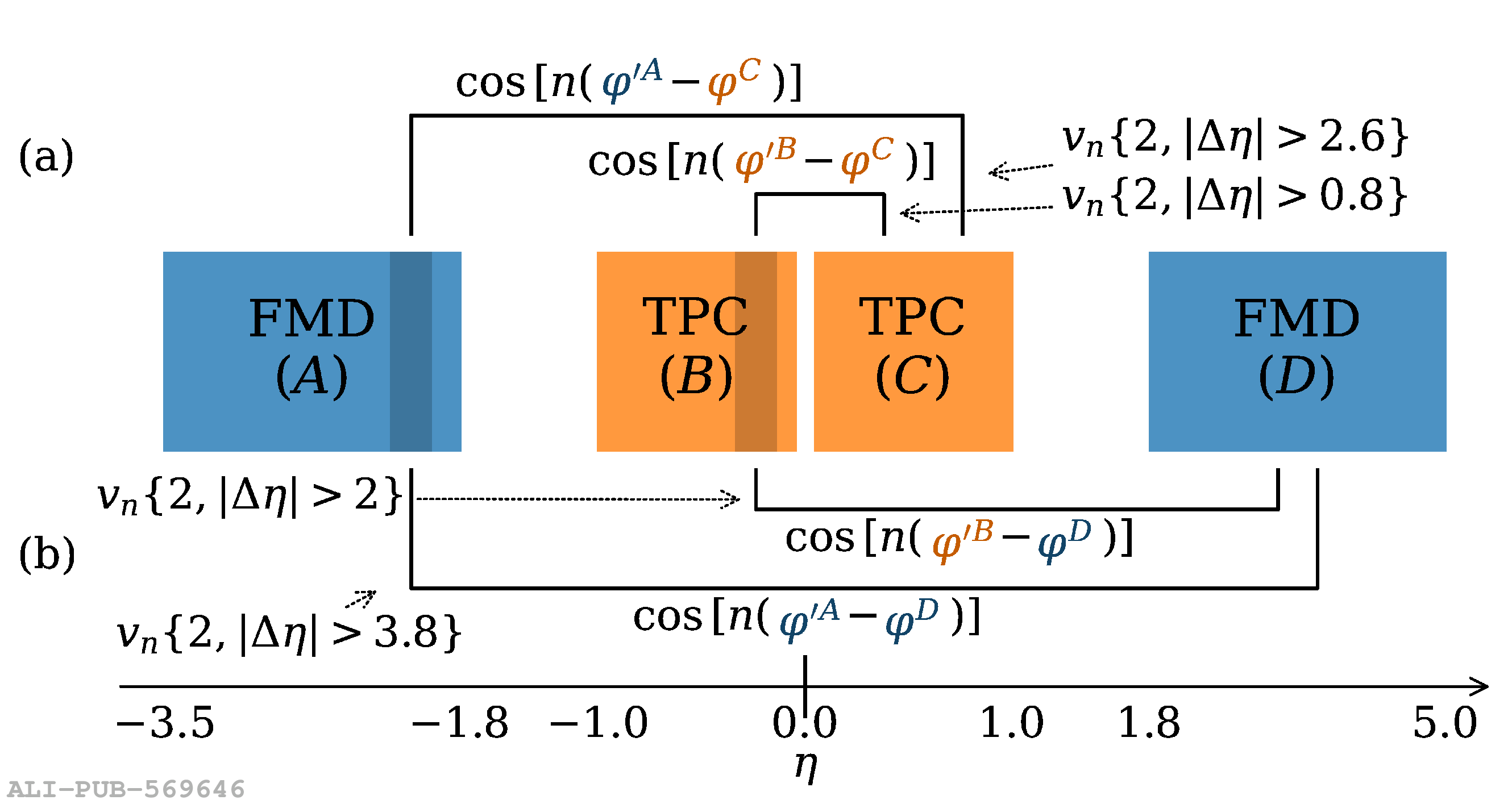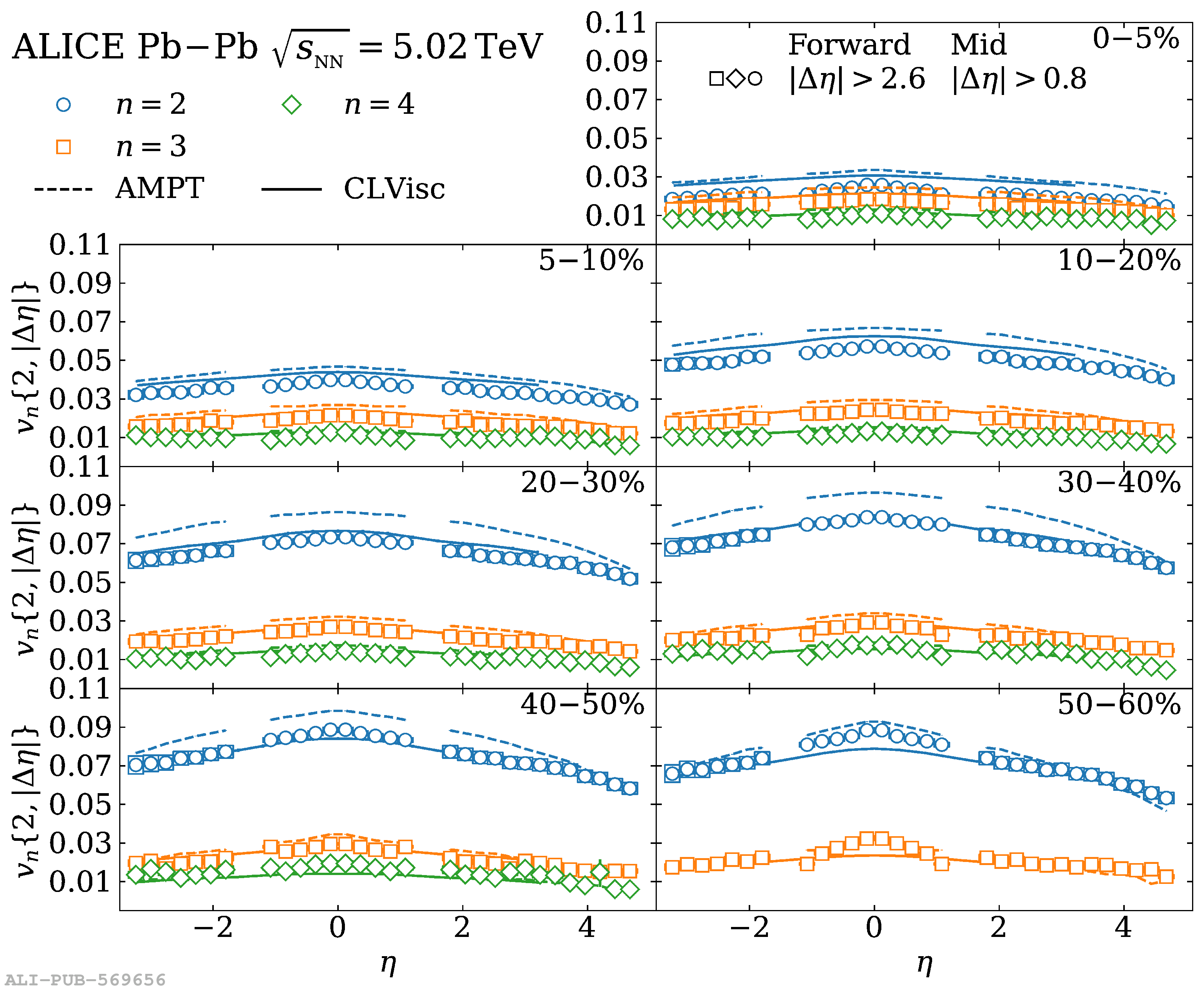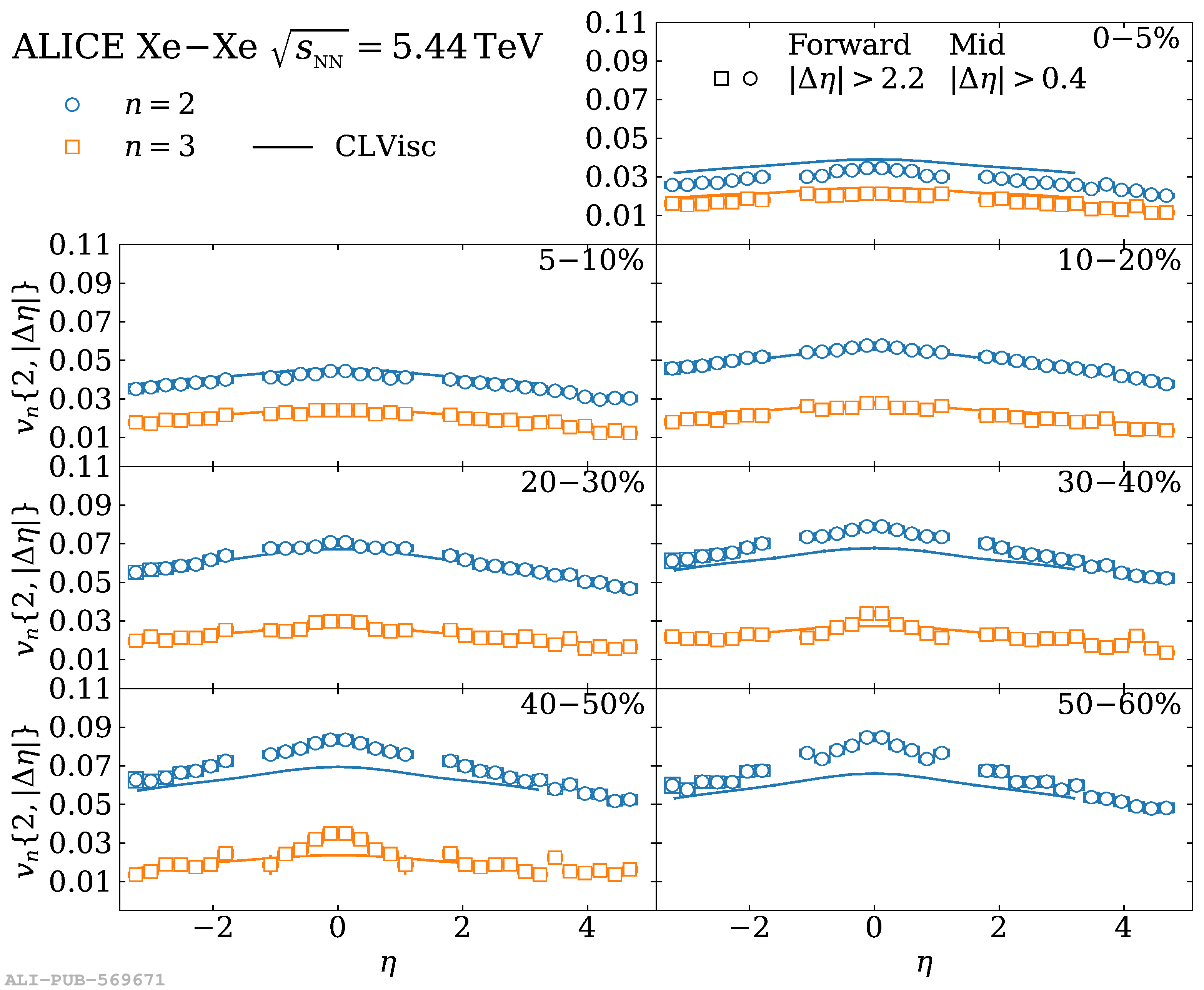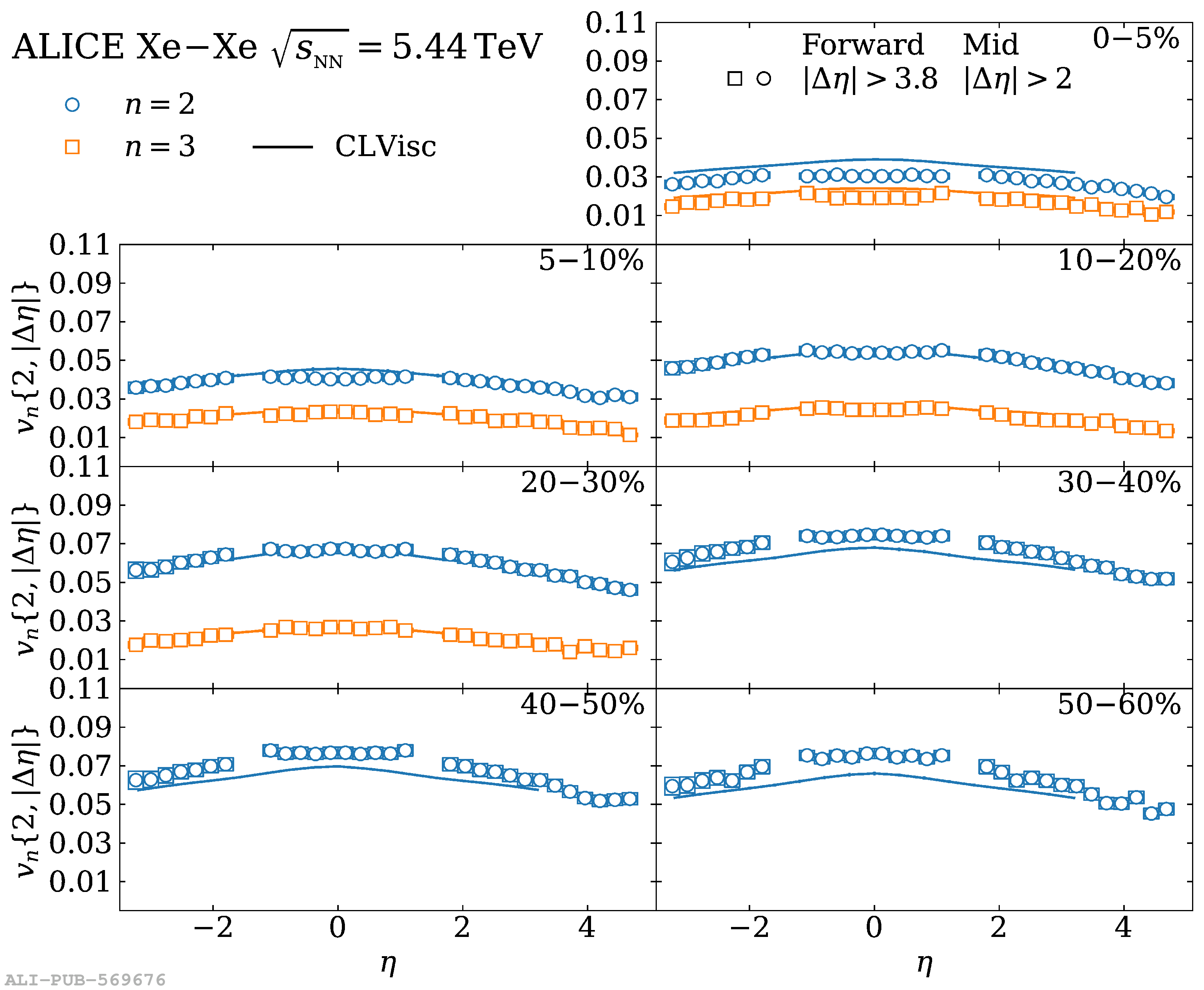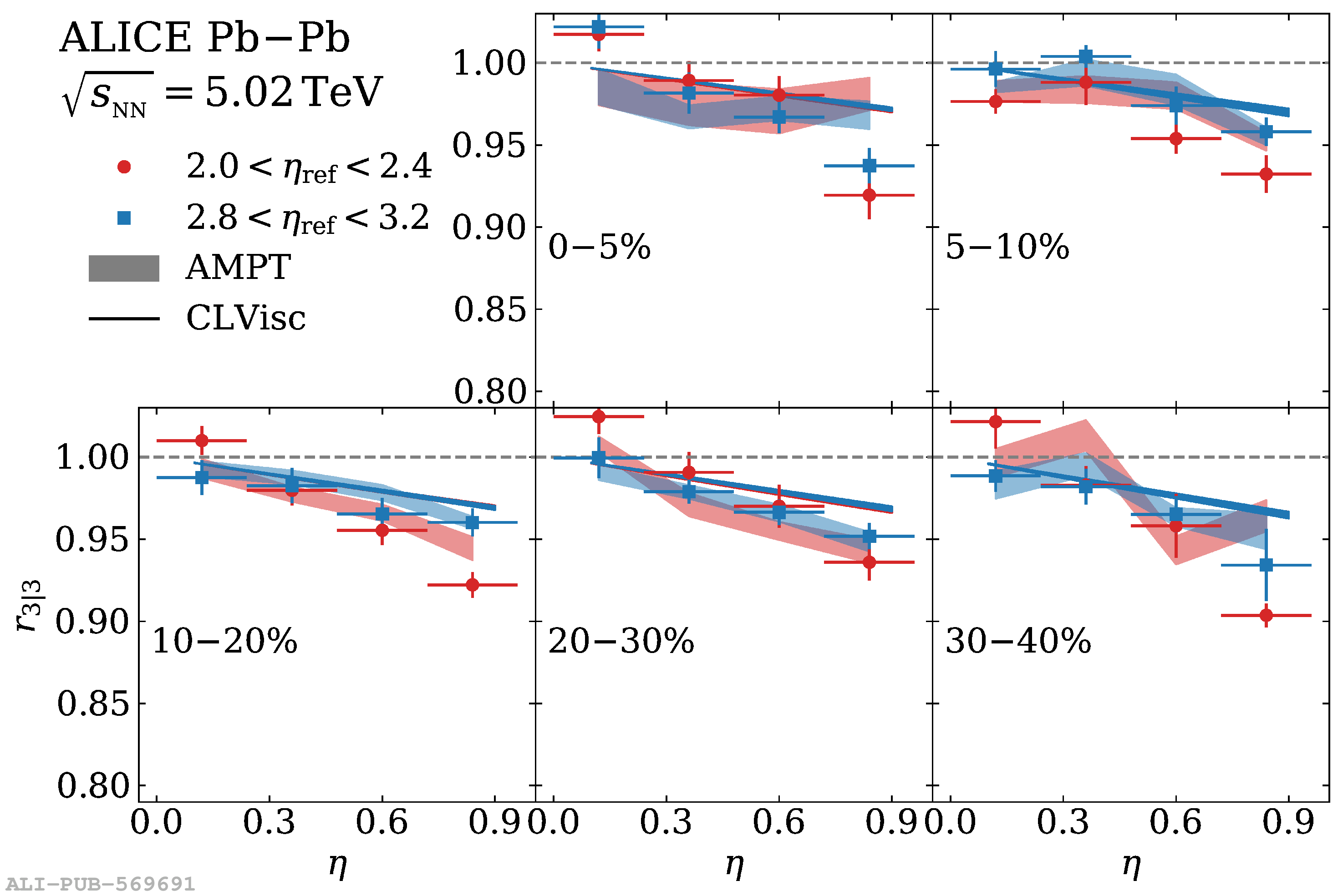The pseudorapidity dependence of elliptic ($v_2$), triangular ($v_3$), and quadrangular ($v_4$) flow coefficients of charged particles measured in Pb-Pb collisions at a centre-of-mass energy per nucleon pair of $\sqrt{s_{\rm NN}}=5.02$ TeV and in Xe-Xe collisions at $\sqrt{s_{\rm NN}}=5.44$ TeV with ALICE at the LHC are presented. The measurements are performed in the pseudorapidity range $-3.5 <~ \eta <~ 5$ for various centrality intervals using two- and multi-particle cumulants with the subevent method. The flow probability density function (p.d.f.) is studied with the ratio of flow coefficient $v_2$ calculated with four- and two-particle cumulant, and suggests that the variance of flow p.d.f. is independent of pseudorapidity. The decorrelation of the flow vector in the longitudinal direction is probed using two-particle correlations. The results measured with respect to different reference regions in pseudorapidity exhibit differences, argued to be a result of saturating decorrelation effect above a certain pseudorapidity separation, in contrast to previous publications which assign this observation to non-flow effects. The results are compared to $3+1$ dimensional hydrodynamic and the AMPT transport model calculations. Neither of the models is able to simultaneously describe the pseudorapidity dependence of measurements of anisotropic flow and its fluctuations. The results presented in this work highlight shortcomings in our current understanding of initial conditions and subsequent system expansion in the longitudinal direction. Therefore, they provide input for its improvement.
Phys. Lett. B 850 (2024) 138477
HEP Data
e-Print: arXiv:2307.11116 | PDF | inSPIRE
CERN-EP-2023-134
Figure group

